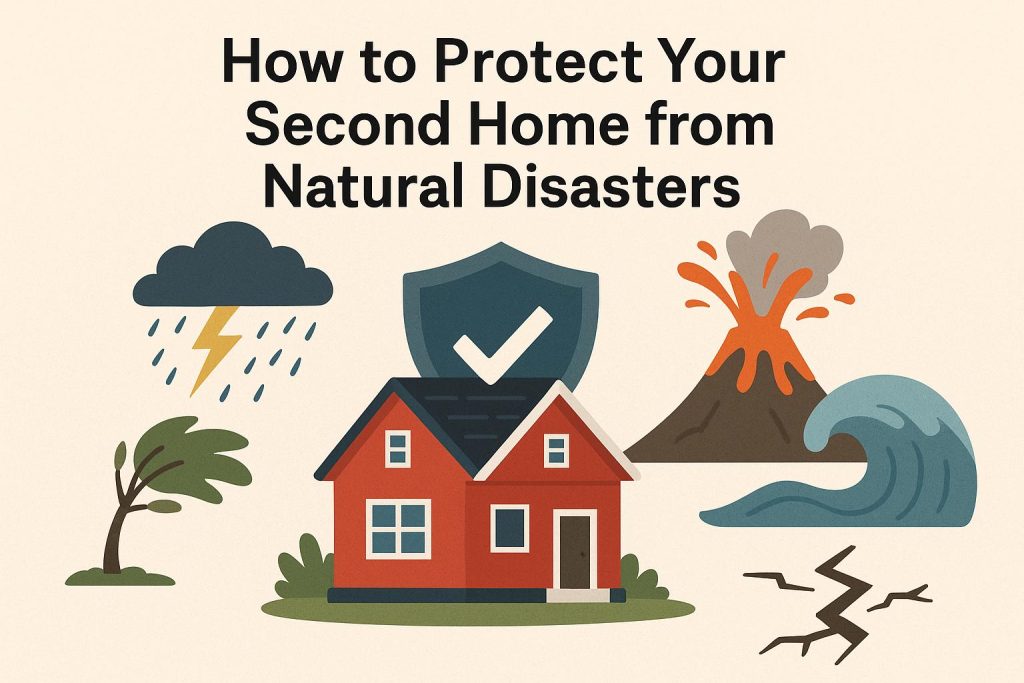How to protect your second home from natural disasters

Understanding the Risks
Before implementing any protective measures, it is essential to understand the types of natural disasters that might occur in the location of your second home. Recognizing these risks allows you to prepare adequately and tailor your prevention strategies specifically to the local environmental conditions. Several factors must be considered when evaluating potential natural disasters, including geography, climate, and historical data patterns.
The geographical area plays a significant role in determining the types and frequency of natural disasters you might face. For example, homes located in coastal regions are usually more susceptible to threats such as hurricanes and flooding. These areas are often in the path of storm systems that originate over the ocean, bringing high winds and heavy rainfall that can lead to significant property damage and safety hazards.
On the other hand, homes situated in the western parts of a country may encounter risks such as wildfires and earthquakes. Areas with dense forestation can experience wildfires due to drier climates and warm temperatures. Earthquake-prone zones, often near fault lines, can lead to substantial structural damage, compromising the safety and integrity of any building.
Another component is the climate. Seasonal weather patterns, such as the monsoon or tornado seasons, can indicate periods of heightened vulnerability. Historical data provides a record of past events, highlighting the frequency, intensity, and impact of various natural disasters in a given area. Accessing this information allows homeowners to better anticipate what might happen and plan preventive measures accordingly.
Familiarizing yourself with local resources and guidelines is paramount. Many communities offer localized preparedness resources and guidelines, providing valuable insights into the specific risks faced by residents. This could include town hall meetings, informational brochures, or government websites where experts share their knowledge.
Building a Solid Defense
Constructing and reinforcing your home can mitigate the potential damage caused by natural disasters. It involves tailoring your home’s design with materials and structural elements that are uniquely suited to withstand the particular environmental challenges in your area.
Reinforced Construction
Investing in impact-resistant materials is crucial for safeguarding your home. Windows and doors are vulnerable entry points for wind and debris during storms. By installing double-pane tempered glass or adding storm shutters, you enhance these barriers, minimizing the risk of damage. Reinforcement further extends to the roof, where hurricane straps or clips can be installed to secure it against high winds.
Flood-prone areas demand special attention to the home’s foundation. Elevating the foundation can prevent water from entering living spaces, which severely reduces the risk of flood damage. These measures maintain the integrity of the structure during severe weather conditions, providing a layer of security against the forces of nature.
Utility Management
Managing utilities effectively is another critical defense strategy. In areas prone to flooding, installing sump pumps equipped with battery backups ensures that your home remains dry even if the power goes out during a flood. The electrical systems should be elevated above potential water levels to prevent short circuits and maintain safety. Implementing surge protectors is essential to protect expensive electrical appliances from voltage spikes during storms.
Maintaining Your Surroundings
The security of your home extends beyond its physical boundaries. The state of the surrounding area can either heighten or reduce the vulnerability of a property to natural disasters. Regular maintenance and strategic landscaping are vital.
Landscape Management
Trees and shrubs can pose a significant risk if they are not properly managed. Strong winds can cause branches to break and fall, potentially damaging your home. Regular trimming of trees and shrubs minimizes this threat. In wildfire-prone areas, opting for fire-resistant plants and maintaining defensible space around your property can substantially reduce fire risk. Creating clear and efficient drainage systems is crucial, as it guides water away from your home during heavy rains, preventing flooding and water damage.
Strategic Preparations
Developing a comprehensive strategic plan is equally important as the physical reinforcements. Being prepared mentally and logistically for a natural disaster can reduce panic and improve response time.
Emergency Planning
An effective emergency plan covers all vital aspects of disaster response. It should include detailed evacuation routes, communication plans, and designated meeting points for families. Ensure that the plan accounts for every family member, including pets, so that everyone knows their role and responsibilities during an emergency. This resource can help you create a comprehensive emergency plan.
Home Inventory and Documentation
Maintaining an updated inventory of your home’s contents ensures you have all necessary information when filing insurance claims. This inventory should detail the items’ condition, value, and location within the home. Important documents, such as property deeds and identification, should be stored securely but be easily accessible if you need to evacuate.
Insurance Considerations
Understanding how insurance plays a role in your disaster preparedness plan is vital. Standard homeowners insurance policies often do not cover all types of natural disasters, so assessing and adjusting your policy is necessary to ensure comprehensive protection.
Specialized Coverage
Acquiring supplemental insurance policies for specific types of disasters can be a wise decision. These policies might include flood insurance, which covers damage from rising water levels, or earthquake insurance, which addresses risks associated with seismic activities. Work directly with your insurance provider to comprehend the coverage details, exclusions, and policy limitations.
Conclusion
Preparing a second home for natural disasters involves integrating preventative measures, strategic planning, and ensuring adequate insurance protection. By rigorously assessing risks, enhancing the structural resilience of your property, managing the surrounding landscape, and implementing a thorough emergency plan, you can significantly reduce potential damage and increase safety during natural calamities.
